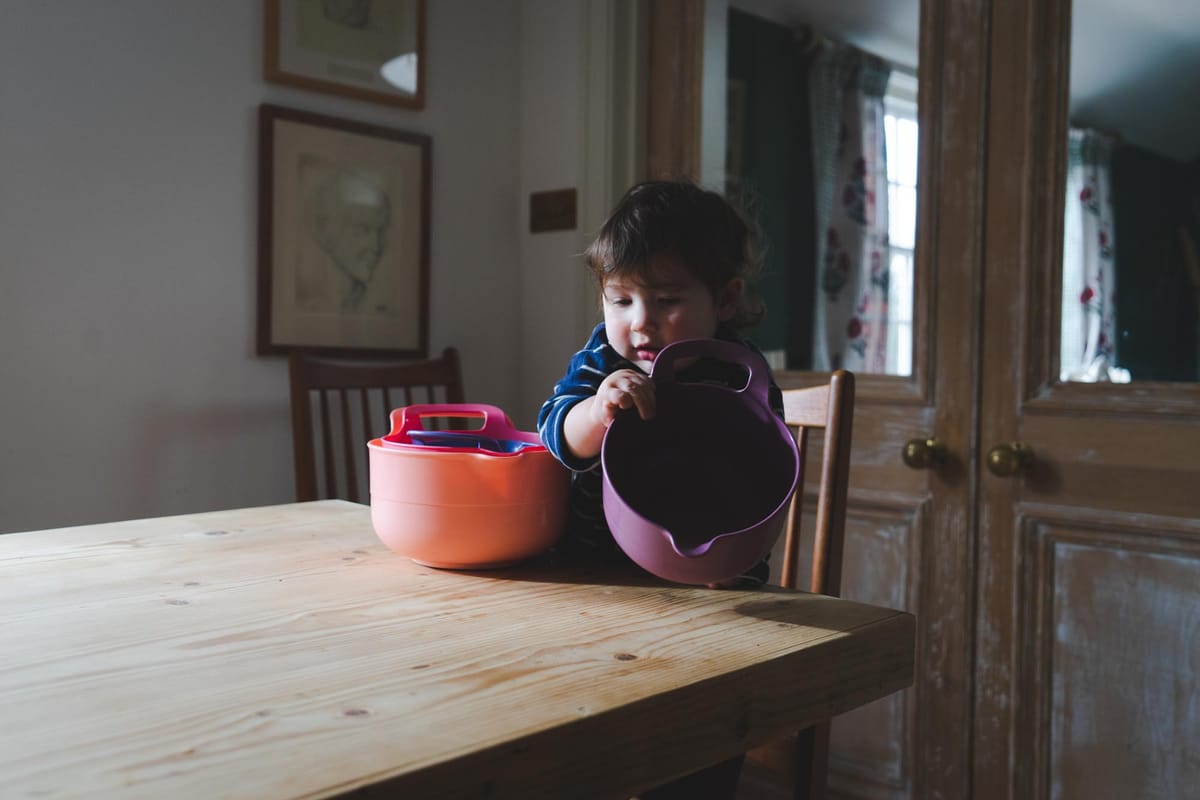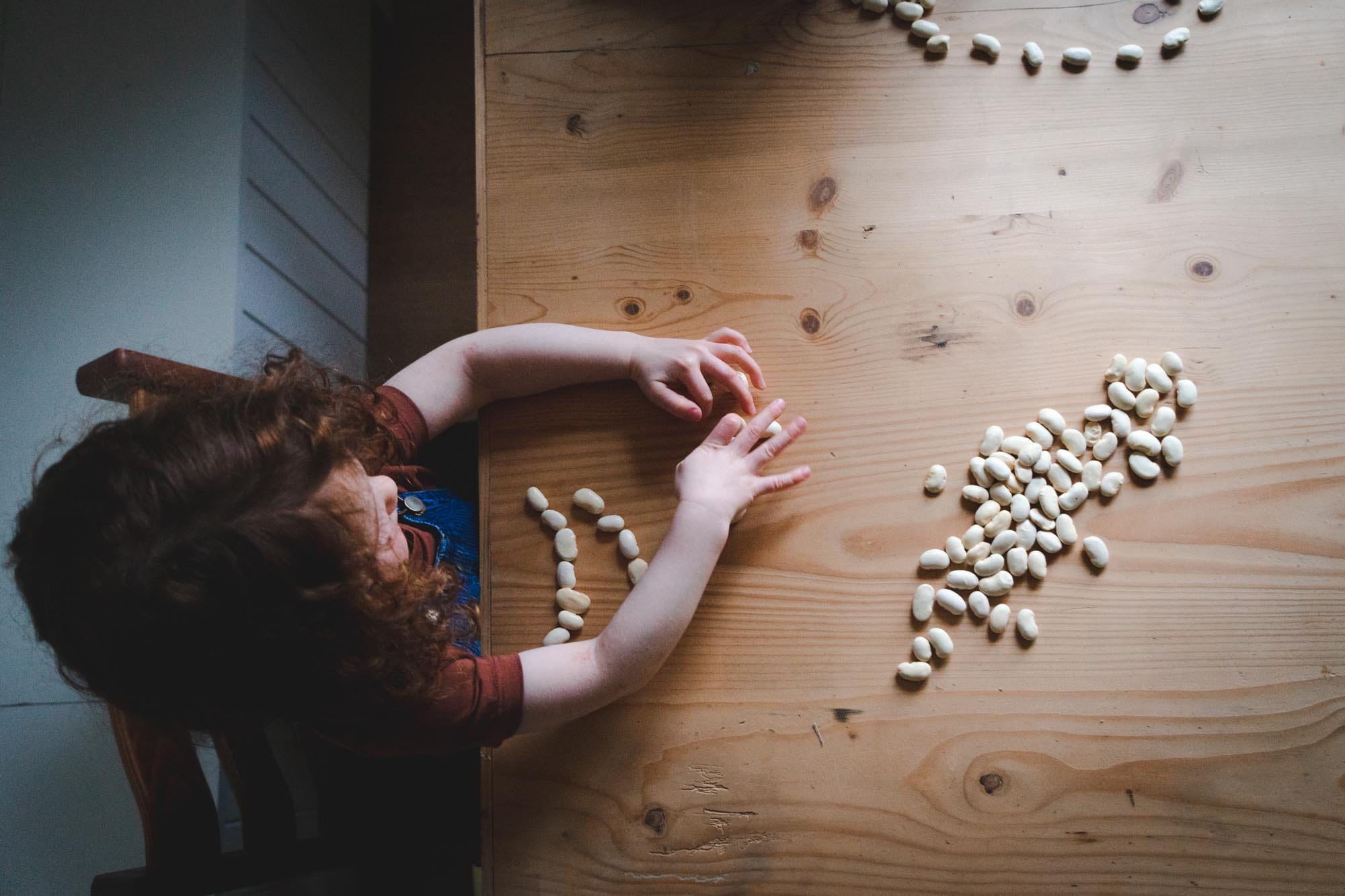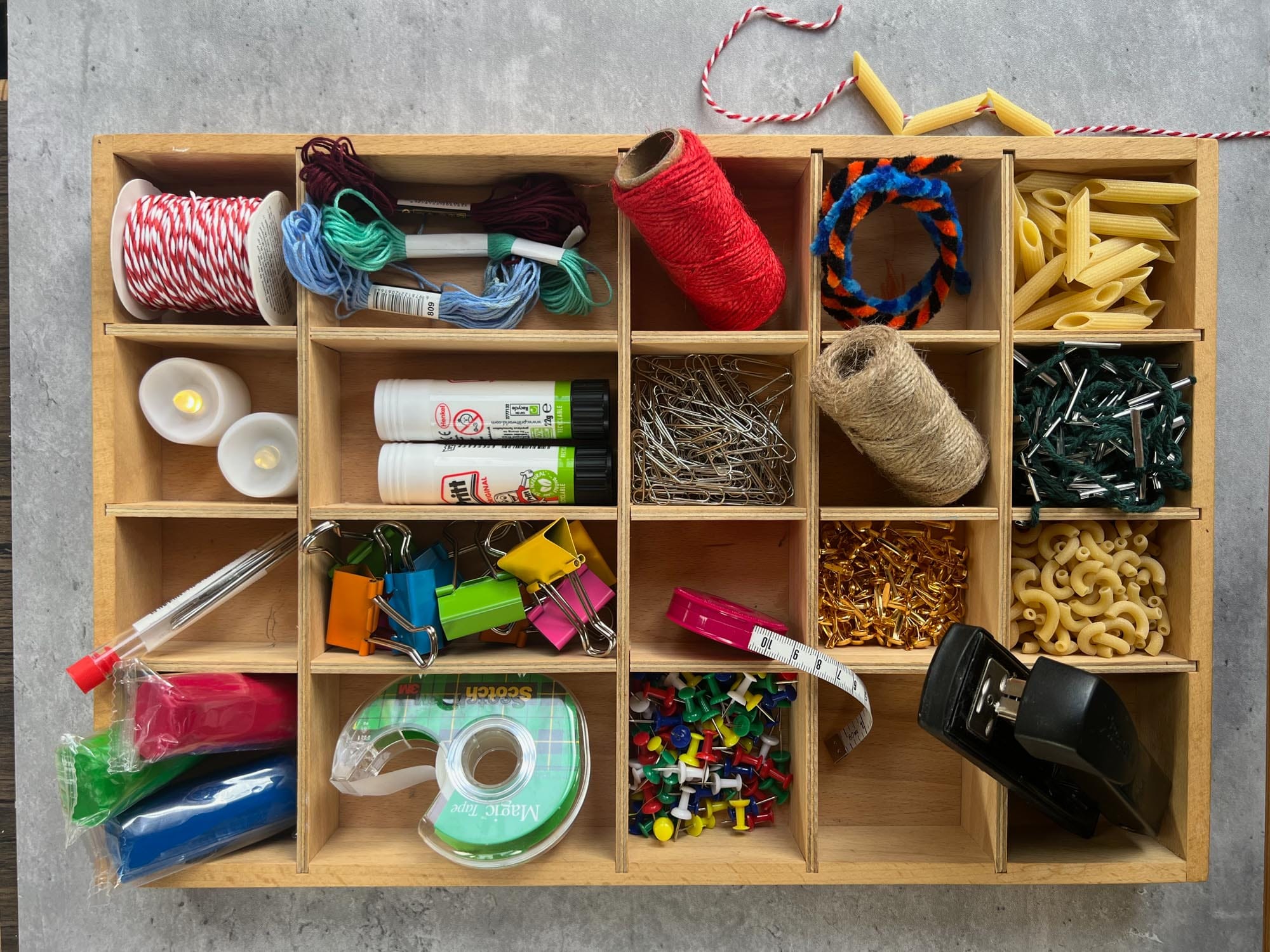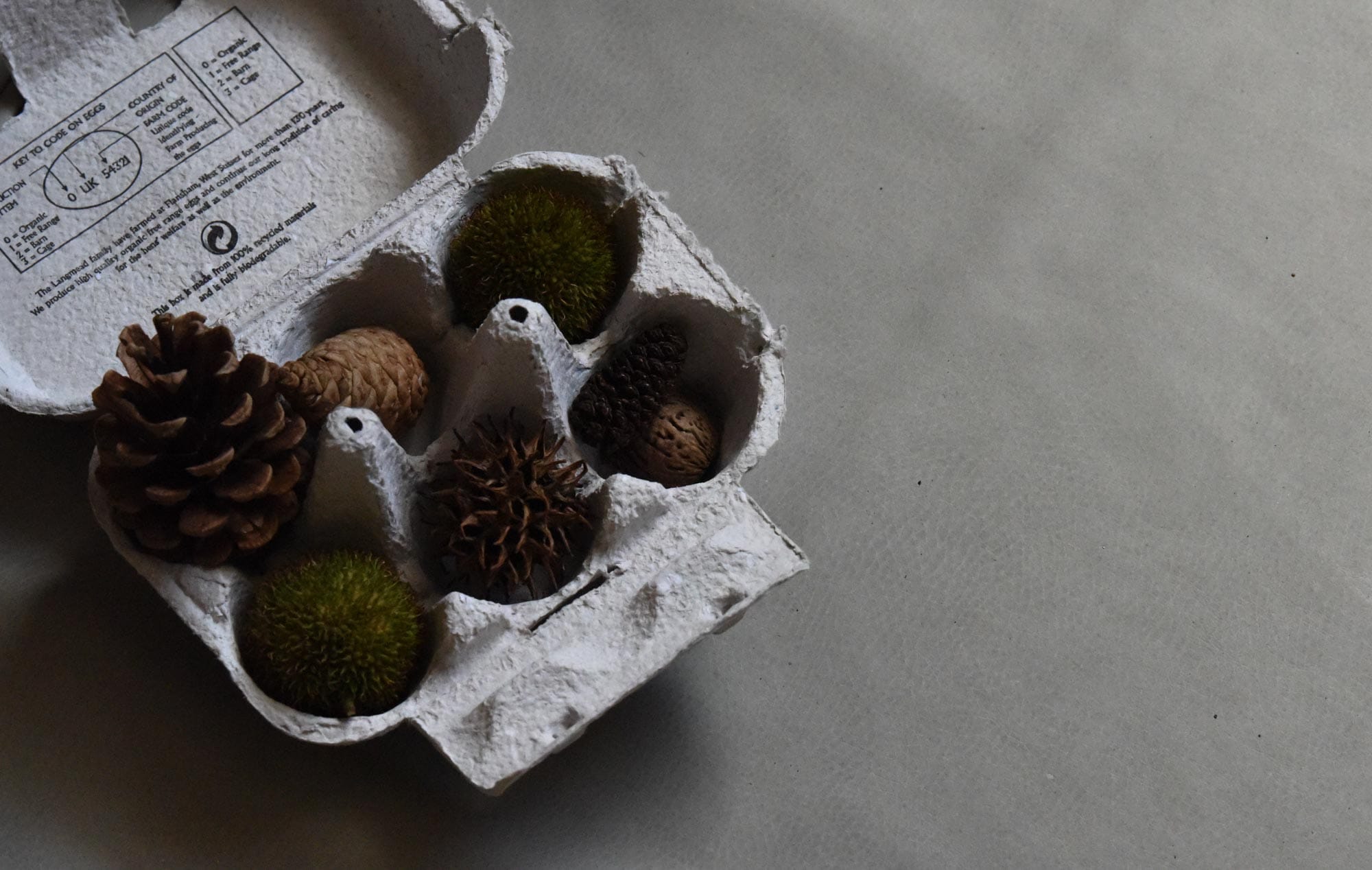Play essentials
Everyday items beat toys every time. Why? Becauase they have 'play potential'.

Finding play potential everywhere
Have you noticed how children often ignore expensive toys in favour of cardboard boxes, kitchen utensils, and random bits and pieces? There's a good reason for this. These everyday items have what we call 'play potential' - they can become anything in your child's imagination.
Unlike toys with set purposes, open-ended materials invite creativity and problem-solving. They don't dictate how they should be used, allowing children to explore endless possibilities. A stick might become a wand, a pencil, or a flag pole. Paper clips could be linked into chains, used as counters, or transform into robot parts.
When children engage with these materials, they develop divergent thinking - the ability to find multiple solutions and possibilities. This is a crucial skill that extends far beyond play into lifelong learning and creativity.
Here are 100 everyday items that spark imagination and invention.
Note: For children over 5. Many of the objects are hazardous for toddlers and preschoolers.
Kitchen finds
- Wooden spoons
- Measuring cups
- Funnels
- Colanders
- Rolling pins
- Whisks
- Empty spice jars
- Baking tins
- Silicon moulds
- Measuring spoons
Natural materials
- Pinecones
- Smooth stones
- Sticks
- Leaves
- Shells
- Feathers
- Tree bark
- Dried flowers
- Seeds
- Acorns
Paper goods
- Cardboard tubes
- Paper plates
- Cardboard boxes
- Paper bags
- Tissue paper
- Gift wrap scraps
- Index cards
- Envelopes
- Paper cups
- Cupcake liners
Craft basics
- Lolly sticks
- Matchsticks
- String
- Sticky tape
- Treasury tags
- Elastic bands
- Paper clips
- Split pins
- Pipe cleaners
- Wooden pegs
Textiles
- Fabric scraps
- Ribbon
- Yarn
- Buttons
- Felt pieces
- Old socks
- Wool roving
- Lace
- Velvet scraps
- Net fabric
Small parts
- Marbles
- Corks
- Bottle caps
- Washers
- Nuts and bolts
- Beads
- Dried beans
- Pasta shapes
- Metal rings
- Wooden discs

I'm sure I don't have to tell you to be careful with all these materials. We give our children toys rather than everyday materials because they have been safety tested. A toy marked 3+ is a danger to a toddler, most likely because it's a choke hazard. Things you find in your kitchen cupboard have no such labels. My one-year-old sister once posted dried white beans up her nose. It took a trip to the hospital to get them out.
Office supplies
- Rulers
- Rubber bands
- Bulldog clips
- Hole punchers
- Staplers
- Post-it notes
- File folders
- Labels
- Push pins
- Sand timers

Building materials
- Paint stirrers
- Wood offcuts
- PVC pipe pieces
- Tile samples
- Foam pieces
- Dowel rods
- Cable ties
- Wire
- Chain links
- Rope
Containers
- Baskets
- Tins
- Glass jars
- Plastic bottles
- Egg cartons
- Berry punnets
- Takeaway containers
- Wooden crates
- Metal buckets
- Plant pots

Miscellaneous treasures
- Keys
- Magnets
- Prisms
- Mirrors
- Wheels
- Pulleys
- Gears
- Springs
- Hinges
- Locks
When you start looking at everyday items through the lens of play potential, your whole house becomes a resource for creativity and learning. The craft drawer and kitchen cupboard often hold more play value than the toy box.
Remember: the best materials are those that can become anything. They grow with your child's imagination and can be used in increasingly complex ways as skills develop.
Want to start? Choose just five items from this list and place them thoughtfully in your child's play space. Watch how they discover new possibilities you never considered. That's the magic of open-ended play.
Comments ()